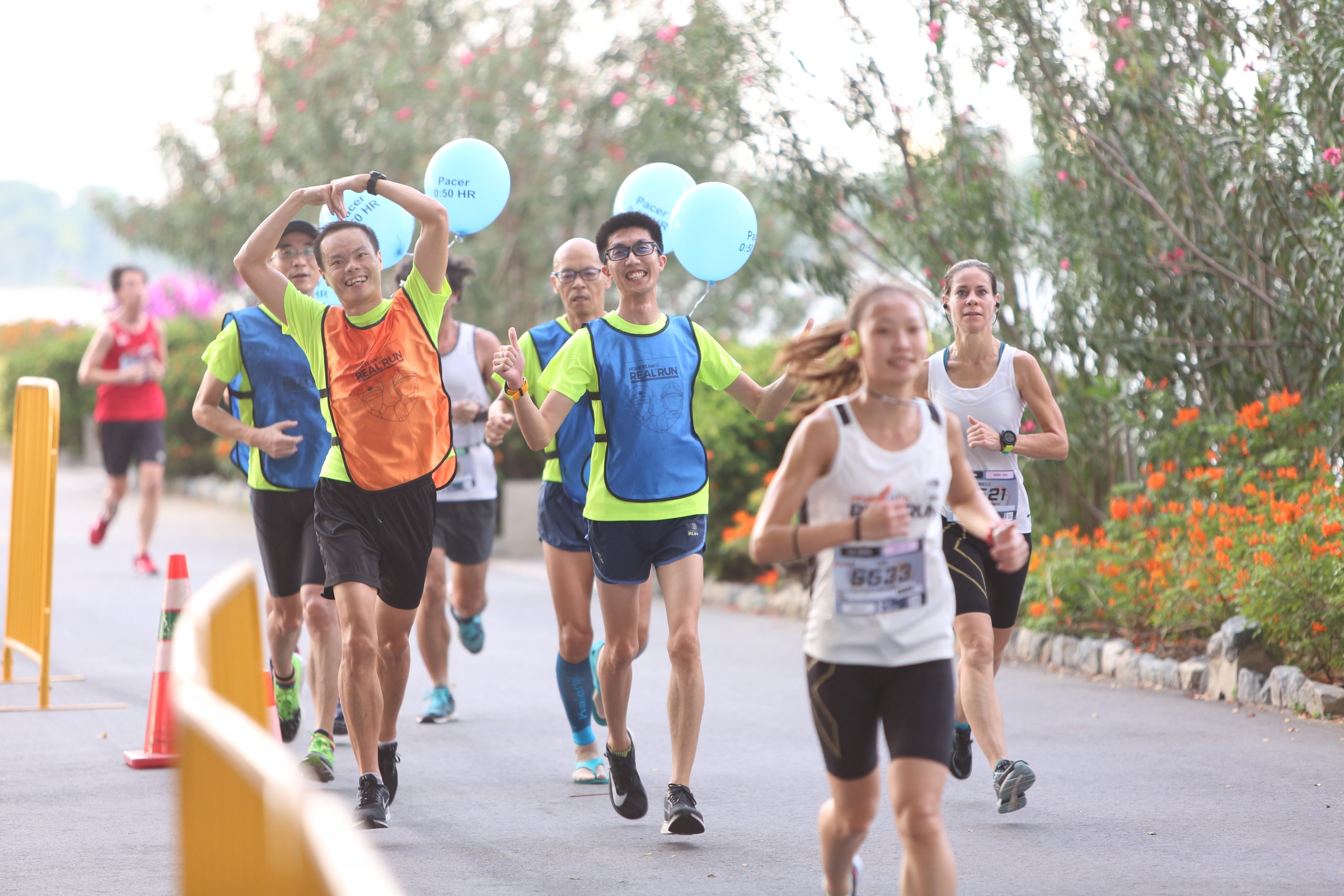
Whether you’re new to the REAL® Run or want to beat your personal best, the hallmark of a good race is prepping well and following through. Here’s how.
TEXT: NICHOLAS JACOB
PHOTOS: HOMETEAMNS
With virtual races having been the status quo until very recently though, are we really prepared for the differences between physical and virtual runs? Now that you’ve signed up for REAL® Run 2022, here are some tips from our Fitness Workz trainer on how you can better prepare for the race physically and mentally.
MOTIVATION AND CONSCIENTIOUSNESS COUNTS

Between the day you register and the day itself, only one thing truly matters: Preparation.
Training for a virtual run came with many unique challenges. Being unable to train with friends physically can dampen the sense of camaraderie and hamper the desire to get up for those early-morning training sessions without a buddy.
The benefits of a physical setting, however, don’t stop at just the sense of solidarity we build when training in person with fellow runners – the excitement of physical competition can be a powerful motivating factor.
Even so, it’s important not to get too overzealous while training for a race. Fitness Workz trainer Danish’aizat shares that over-training and lax post-training habits, for instance, are notable hazards.
“To minimise risk of sustaining injury, runners should moderate their training frequencies and intensity. Heat and stretching before all the exercises and icing the muscle area after the exercise itself are also essential for proper recovery,” he elaborated.
THE RACE-DAY EFFECT

Studies show that many runners perceived virtual races to be harder, also showing than on average, runners were slower during stand-alone time trial efforts versus when racing head-to-head against in-person competition.
Part of this boils down to how our brains perceive when and how much effort we invest into an activity. In a physical race however, we have constantly targets in front of us to pace against, chase down and overtake.
The atmosphere of a physical race is not to be understated – competition in close quarters and crowds cheering you on may well give you that extra push you need to smash your personal best time.
Mr Danish’aizat has fond memories of the festive atmosphere at a REAL® Run race. This extends back to well before he became a Fitness Workz trainer. He volunteered with the rest of his class for REAL® Run 2018 when he was a Higher Nitec Sport Management student.
“I was able to volunteer with my peers and make new friends and connection at the event. We were all busy working and communicating as a team and it went super smoothly. When one of us needed help, someone would lend a hand. We enjoyed ourselves immensely and the atmosphere was great.”
While the atmosphere at a physical event can make a big difference, Mr Danish’aizat cautions against being too caught up in the moment and ignoring any potential injury.
“Serious injuries can occur during any run. When it comes to injuries like a twisted ankle, some runners will continue to run if it is bearable – but doing so will only worsen the injury,” he clarified.
“As another example, if experiencing lower back pain, stop the run, stretch it out and continue the run if it feels relief, but if it does not, seek medical help,” he advised.
A LESS FORGIVING RUN
Another major difference between virtual and physical runs is the race route. With virtual runs tracked using apps or fitness wearables, it’s far easier to plan an ideal route.
With a physical race, the route and timing are often fixed.
Sometimes, runners may “hit the wall” during a race despite ample preparation, which can be particularly crushing during a physical race. Mr Danish’aizat notes that the most important thing to keep in mind is that it doesn’t matter how fast you go, as long as you do not stop.
“You have already spent months preparing for it, why give up now? Always stay positive and remember that there will always be a next race in the future,” he said.
PREPARING FOR PHYSICAL VS. VIRTUAL
Training for physical runs require runners to anticipate conditions for their competition route.
For example, treadmills can help with training for hilly terrain. By training on simulated inclines, one can not only mentally prepare for steep climbs and long ascents, but also develop leg strength and improve your form in the process.
Also, if one expects bumpy roads or uneven trails during a physical run, it’s worth making preparations like purchasing the right footwear and deliberately running on rough terrain to develop balance and agility while reducing risk of injury.
Finally, make sure you’re mentally prepared ahead of the race itself. The key here is to keep a clear mind focused on your goals. Remember to breathe, trust in your training and push yourself to meet or even exceed your goals as you keep your eyes on the prize: that glorious moment when you cross that long-awaited finishing line.

